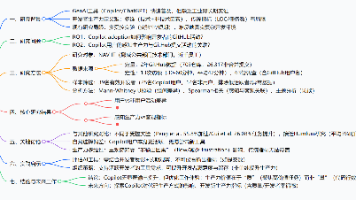策略设计模式是一种行为模式,其中我们有多种算法/策略来完成一项任务,所使用的算法/策略留给客户选择。 各种算法选项封装在单独的类中。
在本教程中,我们将学习在Java中实现策略设计模式。
UML表示形式:
首先,我们来看一下策略设计模式的UML表示形式:

在这里,我们有:
- 策略:定义我们打算执行的常见操作的界面
- ConcreteStrategy:这些是使用不同算法来执行Strategy界面中定义的操作的实现类
- 背景:任何需要改变行为并提及策略的事物
JDK中策略模式的一个流行示例是Collections.sort()方法中java.util.Comparator的用法。 我们可以将Collections.sort()方法视为上下文,并将其作为传递对象排序策略的java.util.Comparator实例。
实施策略模式:
众所周知,任何购物网站都提供多种付款方式。 因此,让我们使用此示例来实现策略模式。
我们将首先定义我们的PaymentStrategy接口:
public interface PaymentStrategy {
void pay(Shopper shopper); } 现在,让我们定义两种最常见的付款方式,即货到付款和卡付款,作为两种具体的策略类:
public class CashOnDeliveryStrategy implements PaymentStrategy {
@Override
public void pay(Shopper shopper) {
double amount = shopper.getShoppingCart().getTotal();
System.out.println(shopper.getName() + " selected Cash On Delivery for Rs." + amount );
} } public class CardPaymentStrategy implements PaymentStrategy {
@Override
public void pay(Shopper shopper) {
CardDetails cardDetails = shopper.getCardDetails();
double amount = shopper.getShoppingCart().getTotal();
completePayment(cardDetails, amount);
System.out.println( "Credit/Debit card Payment of Rs. " + amount + " made by " + shopper.getName());
}
private void completePayment(CardDetails cardDetails, double amount) { ... } } 实施上下文:
定义了策略类之后,现在让我们定义一个PaymentContext类:
public class PaymentContext {
private PaymentStrategy strategy;
public PaymentContext(PaymentStratgey strategy) {
this .strategy = strategy;
}
public void makePayment(Shopper shopper) {
this .strategy.pay(shopper);
} } 同样,我们的Shopper类看起来类似于:
public class Shopper {
private String name;
private CardDetails cardDetails;
private ShoppingCart shoppingCart;
//suitable constructor , getters and setters
public void addItemToCart(Item item) {
this .shoppingCart.add(item);
}
public void payUsingCOD() {
PaymentContext pymtContext = new PaymentContext( new CashOnDeliveryStrategy());
pymtContext.makePayment( this );
}
public void payUsingCard() {
PaymentContext pymtContext = new PaymentContext( new CardPaymentStrategy());
pymtContext.makePayment( this );
} } 我们系统中的购物者可以使用一种可用的购买策略进行付款。 在我们的示例中,我们的PaymentContext类接受所选的支付策略,然后为该策略调用pay()方法。
策略与状态设计模式:
策略和状态设计模式都是基于接口的模式,可能看起来相似,但有一些重要区别:
- 状态设计模式定义了各种状态,其中策略模式更多地讨论了不同的算法
- 在状态模式中,存在从一种状态到另一种状态的过渡。 另一方面,策略模式中的所有策略类都是相互独立的
请随时探索状态设计模式 。
结论:
通过此快速教程,我们现在知道如何实现策略设计模式。
它是最常用的设计模式之一,并遵循“ 打开/关闭”原则 。 因此,要添加新策略,我们可以简单地创建一个额外的策略类。 但是,请注意,我们必须在这里更新客户端代码,因为客户端选择了要调用的策略。
翻译自: https://www.javacodegeeks.com/2019/09/strategy-design-pattern-java.html








 已为社区贡献35条内容
已为社区贡献35条内容

所有评论(0)